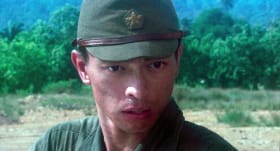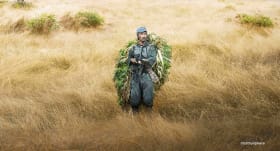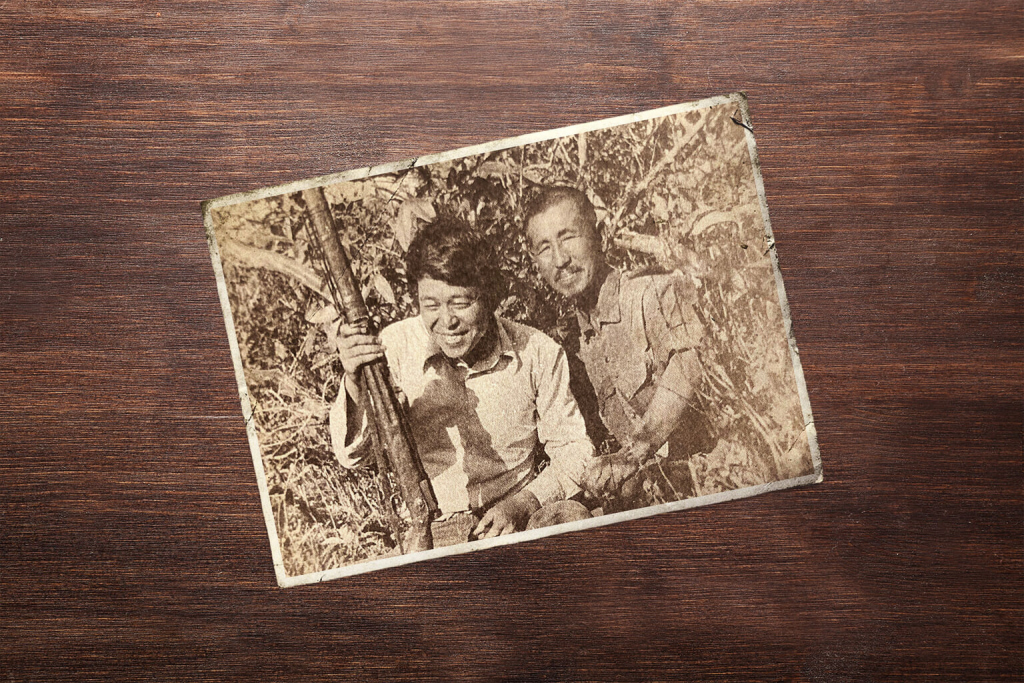“You are absolutely forbidden to die by your own hand. It may take three years, it may take five, but whatever happens, we’ll come back for you. Until then, so long as you have one soldier, you are to continue to lead him. You may have to live on coconuts. If that’s the case, live on coconuts. Under no circumstances are you [to] give up your life voluntarily.” This was the last order commanding officer Major Yoshimi Taniguchi gave to Hiroo Onoda during World War II.
True to his word, he did come back for the soldier. It just took him more than 10,000 days. Onoda was the penultimate Japanese holdout to surrender from World War II. He remained at his jungle post in Lubang Island in the Philippines for over 29 years, refusing to believe the battle was over. Taniguchi eventually relieved Onoda of his duties on March 9, 1974 after he was discovered by explorer Norio Suzuki.
A few months later, Teruo Nakamura became the last known soldier of the Japan Imperial Army to surrender. Born in Taiwan, he never received the kind of attention afforded to Onoda or Shoichi Yokoi, who was discovered two years earlier. Japan’s two most famous holdouts both wrote autobiographies. Onoda’s was adapted into a movie that premiered at the Cannes Film Festival earlier this year.

Yuya Endo as a young Hiroo Onoda in Onoda 10,000 Nights in the Jungle
Background
Onoda was born on March 19, 1922 in the city of Kainan in Wakayama Prefecture. From a young age, he was interested in combat training and joined the kendo club at junior high school. After graduating, he got his first job, heading to Wuhan in China to work for the Tajima Yoko trading company aged 17. A year later, he enlisted in the Japanese Imperial Army.
From the outset, Onoda stood out and was recruited for specialized training at the army’s Nakano School. A training center for military intelligence operations, he learned about covert operations, sabotage and guerrilla warfare. These skills would prove invaluable in the decades that followed.
On Boxing Day in 1944, Onoda was sent to Lubang Island, 150 kilometers southwest of Manila. His mission was to do everything he could to hinder enemy attacks there. However, not long after he arrived, the U.S. and Philippine Commonwealth forces took control of the island. Most Japanese soldiers either surrendered or were killed. Onoda, alongside Yuichi Akatsu, Shoichi Shimada and Kinshichi Kozuka, took to the hills. Towards the end of 1945, leaflets were dropped informing the soldiers the war had ended. The four men, though, refused to believe it.

The four remaining Japanese soldiers on Lubang Island in Arthur Harari’s movie
Holding Out
They survived on rainwater, coconuts, bananas and any animals they could catch. Akatsu split up from the group in 1949, going it alone. The following year, he surrendered to the Philippine forces. The others remained on guard. Even when family photos and letters were dropped from an aircraft, they refused to cave in, believing it to be a trick. It was the same with announcements over loudspeakers.
In 1954, Shimada attacked local fishermen on a beach. They returned fire and he was killed, leaving just Onoda and Kozuka. In other regions in Asia, several holdouts surrendered during the 1950s including the famous castaways from the island of Anatahan. A group of men with one woman, Kazuko Higa, their time there was sensationalized as a lurid tale of sex and violence. In seven years on the island, 11 died, all believed to have been murdered.
For some, the humiliation of defeat was too much to take. Seaman Noboru Kinoshita was captured in the Philippines in 1955 and chose to take his own life rather than return to Japan. For years, it was believed that Masashi Ito, who surrendered in 1960, was the last of the holdouts to survive. Then Yokoi was discovered in a Guam jungle in January 1972. Nine months later, Kozuka was shot and killed by local police officers while burning rice collected by famers. Ononda was now the last of his group remaining.

Kanji Tsuda as the older Onoda meeting explorer Norio Suzuki (Taiga Nakano)
Suzuki’s Discovery
Onoda had been declared dead in 1959. However, news of Kozuka’s 27-year survival led to a rethink. Search efforts were set up to find the soldier, all of which ended in failure. That was until Norio Suzuki set out on his expedition. A college dropout, he spent four years travelling in Europe, the Middle East and Africa before briefly returning home. His next mission was to search for “Lieutenant Onoda, a panda and the Abominable Snowman. In that order.”
He found Onoda just four days into his trip. Even as the soldier prepared his rifle, Suzuki remained calm. “The emperor and the people of Japan are worried about you,” he said. Onoda eventually became friendly with the explorer, but wasn’t prepared to leave unless he was relieved of his duties by his commanding officer. Suzuki returned with Taniguchi so he could do just that.
During his time in Lubong, Onoda and his men killed at least 30 Filipinos and injured more than 100. All of them thought they were doing it for the good of their country. Turning over his sword, hand grenades, Arisaka rifle and ammunition, the lieutenant was officially pardoned by the Philippine President Ferdinand Marcos. Asked what was going through his mind during those 10,000 days in the jungle, he simply said, “nothing but accomplishing my duty.”

Onoda – 10,000 Nights in the Jungle premiered at the Cannes Film Festival earlier this year
The Aftermath
A few months later, another holdout was discovered accidentally by a pilot on the Indonesian island of Morotai. Nakamura (born Attun Palalin), was treated very differently to Onoda. Repatriated to Taiwan, he wasn’t even entitled to a pension, initially receiving just ¥68,000 from the Japanese government. They eventually relented, paying him ¥20 million, yet despite his extreme loyalty to the cause, Nakamura received little attention in Japan prior to his death from lung cancer in 1979.
Onoda, on the other hand, was treated like a hero. After decades hiding away from the world, he was suddenly thrust into the international spotlight. That wasn’t something he enjoyed. Disillusioned with Japan, which he believed was losing its traditional values, he moved to Brazil to raise cattle. He married Machie in 1976 before returning home eight years later. The pair established the Onoda Nature School aimed at teaching children about the value of life.
Onoda spent his remaining years moving back and forth between Japan and Brazil. He died of heart failure due to complications from pneumonia on January 16, 2014 aged 91. A legendary figure in this country, he was back in the news recently following the release of Onoda – 10,000 Nights in the Jungle. Starring Yuya Endo and Kanji Tsuda, the film debuted in Cannes in July before its Japan release last month.
*All movie images provided by Elephant House.









